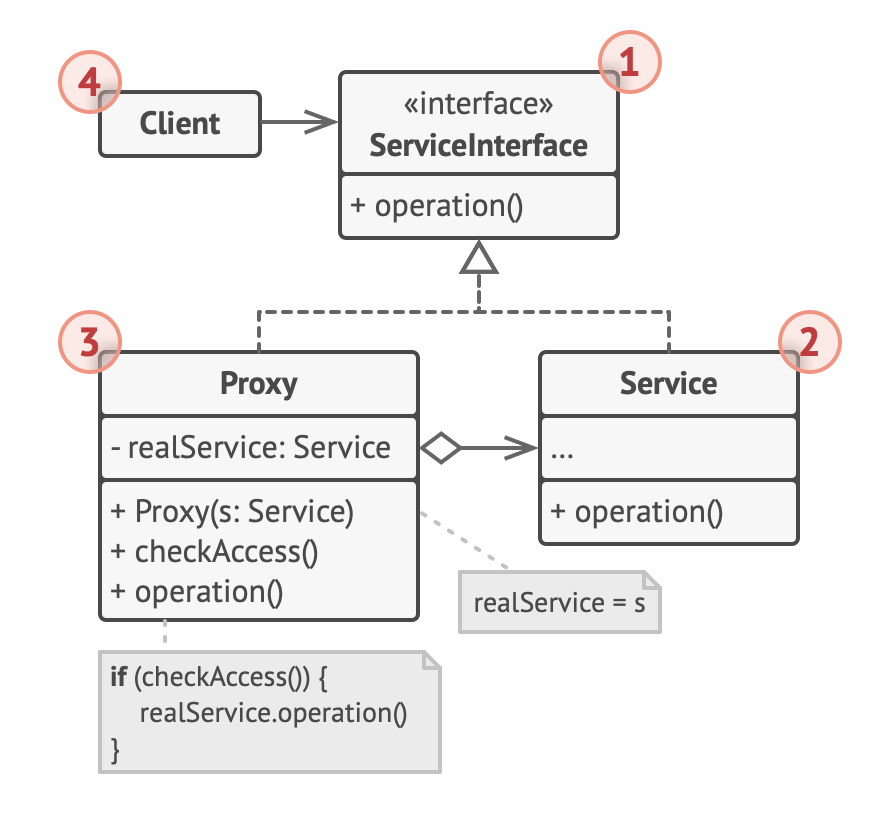Proxy design pattern
- allow us to control access to an object
- original definition
- to provide a surrogate or placeholder for another object to control access to it
- the surrogate / placeholder is used to access the original object
- in doing so, the placeholder is able to augment and change the contents of the original object
- this is often needed to introduce a virtualization layer between the object and the consumer
- when the consumer requests access to the object, it does so through the proxy
- the proxy then governs and modifies the data as needed by acting as a wrapper
- this is often needed to introduce a virtualization layer between the object and the consumer
- in doing so, the placeholder is able to augment and change the contents of the original object
- the surrogate / placeholder is used to access the original object
- to provide a surrogate or placeholder for another object to control access to it
- important thing is that the interface offered to the consumer remains inline and consistent with the original object
- can apply a proxy-like behavior by 2 ways
- directly augmenting an object during access
- through composable wrappers
- this is better and safer because it does not modify the original object
- can apply a proxy-like behavior by 2 ways
typically, this pattern is used when
- need to optimize or preprocess data when the consumer accesses it
- caching remotely access data
- logging
- encryption
- simulating private and inaccessible properties
- data validation
Why use a proxy
- use an extra level of indirection to support distributed, controlled, or conditional access
- add a wrapper and delegation to protect the real component from undue complexity
Structure

-
The Service Interface declares the interface of the Service.
- The proxy must follow this interface to be able to disguise itself as a service object.
-
The Service is a class that provides some useful business logic.
-
The Proxy class has a reference field that points to a service object.
- After the proxy finishes its processing (e.g., lazy initialization, logging, access control, caching, etc.), it passes the request to the service object.
- Usually, proxies manage the full lifecycle of their service objects.
-
The Client should work with both services and proxies via the same interface.
- This way you can pass a proxy into any code that expects a service object.
Summary
- the proxy pattern allows us to create placeholder wrappers for objects
- a proxy object allows external access control to the object
- implements the same interface as the original object
- the proxy api (ES6, ES2015) enables the creation of proxy wrappers for objects
- proxy implements traps for various kinds of access augmentation
- great for implementing middleware mechanism for caching, logging, encryption, and other kinds of augmented functionality as a virtualized proxy